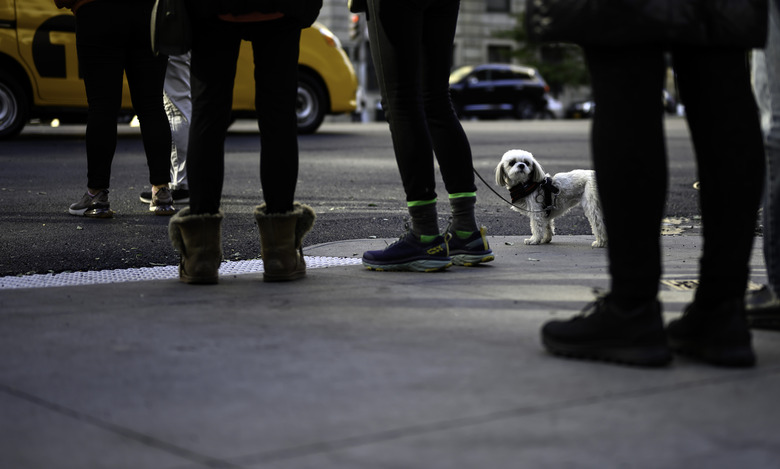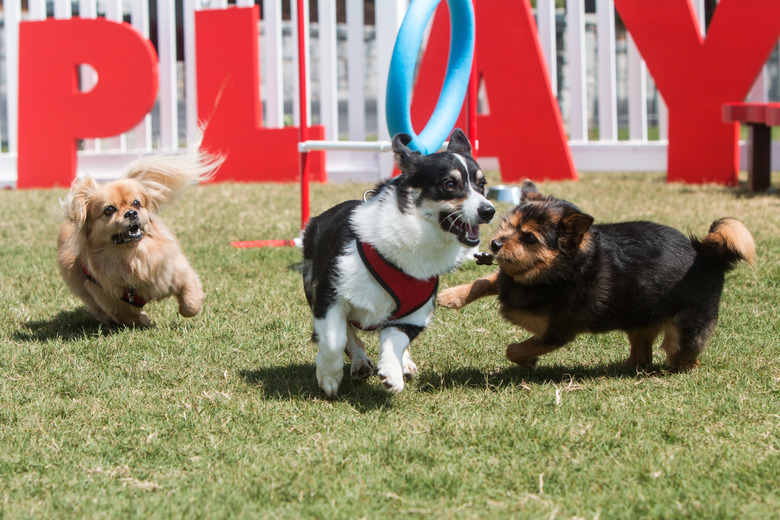What Is Trigger Stacking In Dogs?
Ever had one of those days when nothing seems to go right? Maybe you stubbed your toe as soon as you woke up, left an important work assignment at home, and then got cut off in traffic at the end of the day? One of these things happening is annoying, but all of them piling up over the course of the day might have you snapping at the grocery store cashier for seemingly no reason by the end of the night.
The same thing can happen in dogs. It's called trigger stacking, and sometimes those out-of-character moments, like if your dog snaps at someone she knows, could be a response to being pushed over the limit following a day of non-stop triggers and stress.
What is trigger stacking?
What is trigger stacking?
Trigger stacking is something that occurs when a series of overstimulating, or triggering, a stressful event becomes "stacked," one on top of the other. Common triggers for many dogs include other dogs, traffic, car rides, being introduced to kids, physical pain or being in a new environment, like a pet sitter's home. Initially, just one trigger may not be too much for the dog to withstand, but after having been exposed to a few in the same day it can eventually push the dog past their tolerance threshold. With each trigger, the dog encounters more and more of the hormone cortisol is being produced in their body, making them that much more sensitive to stress for up to 72 hours after the event occurred. Often, once a dog is pushed past his limit he may be left to reactive behaviors as a method of coping with the stress, like snapping, lunging, or barking.
The unfortunate thing about trigger stacking is that it is hardly recognized or credited for a dog's behavior. Often when a dog acts out "poorly" as a result of stress, the dog is seen or scolded for being "bad," when all he was doing was saying "I'm too stressed right now, leave me alone!!" Recognizing when trigger stacking is occurring will save you and your dog, and possibly those around him, unnecessary harm.
How to spot trigger stacking
How to spot trigger stacking
If there's one surefire way to spot trigger stacking in dogs, it's by learning to recognize and read their body language. Canines communicate to each other and to those around them, people included, mostly through various posturing, and voluntary and involuntary bodily responses. Someone who knows what to look out for can spot and potentially prevent a dog from acting out in what's perceived as "aggressive" as a result of being overloaded by stress.
The body language your dog displays will likely reflect their fight-flight-freeze response, which can look different depending on the circumstance, and may not look the same each time. Generally, a fearful dog exhibiting passive body language can be seen with a tucked tail and lowered head, with eyes pointed upward. A highly assertive dog whose fear or stress may cause them to become defensive will have an erect tail that's high up in the air, and may have raised hackles with eyes locked.
Understanding how your dog's body responds to stress can help you notice when your dog is becoming overwhelmed even if you don't feel like she's in an overwhelming situation — stacking happens over time, so little by little your dog is reaching her tolerance threshold, at which point she will likely act out.
Trigger stacking prevention
Trigger stacking prevention
Preventing triggers from stacking up will require some awareness of what your dog becomes triggered by. It's sometimes recommended that you make a list of known triggers to your dog, like busy sidewalks, loud noises, or other things that he may be sensitive to. It's also important to understand what scenarios can bring your dog to a high state of arousal, like playtime with other dogs — even though these may be enjoyable encounters, your dog is still building up those cortisol levels and may make what's usually an innocuous trigger, like a visitor entering the home, that much more stressful. Avoiding those situations, especially if your dog has been exposed to other triggers, can prevent stacking.
Positive reinforcement dog training can also help your dog develop a new relationship with some of their triggers. If you notice that your dog has a specific trigger that he's exposed to regularly, talk with a qualified dog trainer in your area, who can help you create new associations for your dog around that stressor.
In conclusion
In conclusion
Trigger stacking is something that happens to everyone, dog and people included. When dogs become trigger stacked to a point past the dog's threshold, they can act out in "aggressive" manners, like snapping or barking, which can be dangerous, or may result in the dog being punished simply for having become overwhelmed and not being able to take any more stress. Dog owners should be able to recognize potential stressors and do their best to prevent allowing the dog to encounter any more triggers in the next 24 hours to avoid possible outbursts from their canine.


